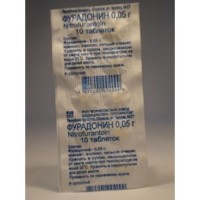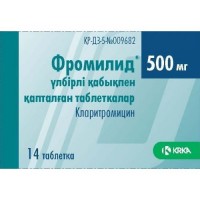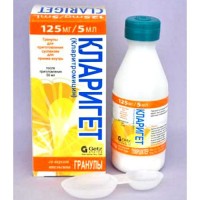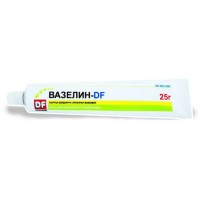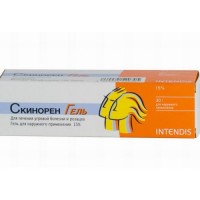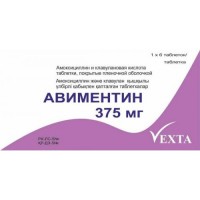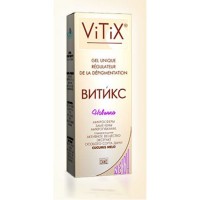ACTICIL (Silver Sulfadiazine + Chlorhexidine Gluconate) Cream, 30 g
- $10.00
What is ACTICIL Cream?
ACTICIL cream is a topical antimicrobial medication combining silver sulfadiazine and chlorhexidine gluconate.
It is designed for treating and preventing skin infections, especially in burn wounds and other skin injuries.
What are the ingredients in ACTICIL Cream?
Each 30-gram tube of ACTICIL cream contains:
- Active Ingredients:
- Silver sulfadiazine: 0.3 grams
- Chlorhexidine gluconate: 0.15 grams
- Inactive Ingredients:
- Cetearyl alcohol
- Cetomacrogol 1000
- Light liquid paraffin
- Butylated hydroxytoluene
- Sodium hydrogen phosphate
- Methylparaben
- Propylparaben
- Disodium EDTA
- Purified water
What does ACTICIL Cream look like?
ACTICIL cream is a homogeneous white cream, free from solid particles.
How does ACTICIL Cream work?
Pharmacokinetics
When applied topically, the active ingredients in ACTICIL cream are minimally absorbed into the systemic circulation.
Pharmacodynamics
ACTICIL is a combined antimicrobial agent for external use. The effects of ACTICIL cream are due to its active ingredients:
- Silver sulfadiazine releases silver ions and sulfonamides slowly and continuously, inhibiting bacterial growth and reproduction. It has a broad spectrum of antibacterial activity, including against bacteria commonly found in burn and wound infections (e.g., Pseudomonas aeruginosa, Escherichia coli, Staphylococcus spp., and Streptococcus spp.), yeast (Candida albicans), and some herpes virus strains.
- Chlorhexidine is a broad-spectrum antiseptic that is bactericidal against both gram-negative and gram-positive bacteria, as well as yeast, dermatophytes, and lipophilic viruses.
When should you use ACTICIL Cream?
ACTICIL cream is indicated for treating and preventing skin infections, including:
- Burn infections (both treatment and prevention, including pre-autografting)
- Purulent wounds
- Infectious complications of trophic ulcers and cuts
How should you use ACTICIL Cream?
ACTICIL cream can be applied with or without dressings. It is intended for skin application only.
After surgical treatment of the burn surface, apply the cream in a layer 2-4 mm thick once or twice daily.
Continue treatment until the wound surface is fully healed.
The application method is the same for treating burns and trophic ulcers, with daily dressing changes.
What are the possible side effects of ACTICIL Cream?
Rare:
- Burning sensation, itching
Very Rare:
- Skin necrosis, erythema multiforme, pigmentation disorders, interstitial nephritis
When applied to large burn or wound areas, rare systemic side effects of sulfonamides may occur, including leukopenia, agranulocytosis, aplastic anemia, thrombocytopenia, hemolytic anemia, skin allergic reactions (e.g., Stevens-Johnson syndrome and exfoliative dermatitis), digestive disturbances, hepatitis, hepatocellular necrosis, CNS reactions, and toxic nephrosis.
Who should not use ACTICIL Cream?
Do not use ACTICIL cream if:
- The patient is a child under 2 months old, including premature infants
- There is a known hypersensitivity to sulfonamides, chlorhexidine, or other cream components
Can you use ACTICIL Cream with other medications?
ACTICIL cream may inactivate enzymatic wound-cleaning agents if used concurrently.
The risk of leukopenia may increase when used with cimetidine.
Are there special precautions for using ACTICIL Cream?
- Use with caution in patients with sulfonamide hypersensitivity due to potential cross-sensitivity.
- Possible risk of superinfection with prolonged use.
- Use cautiously in patients with glucose-6-phosphate dehydrogenase deficiency due to hemolysis risk.
- Monitor serum sulfadiazine levels, kidney function, and possible sulfadiazine presence in urine when applied to large burn areas.
- Long-term use on large skin areas requires monitoring blood counts for leukopenia, thrombocytopenia, or eosinophilia.
- Cautious use in patients with liver and kidney impairments is necessary due to potential accumulation and slower elimination.
- Avoid contact with eyes.
How should you store ACTICIL Cream?
Store ACTICIL cream in a dry, light-protected place at temperatures not exceeding 25°C (77°F).
Do not freeze. Keep out of reach of children.
The shelf life is three years. Do not use after the expiration date.


